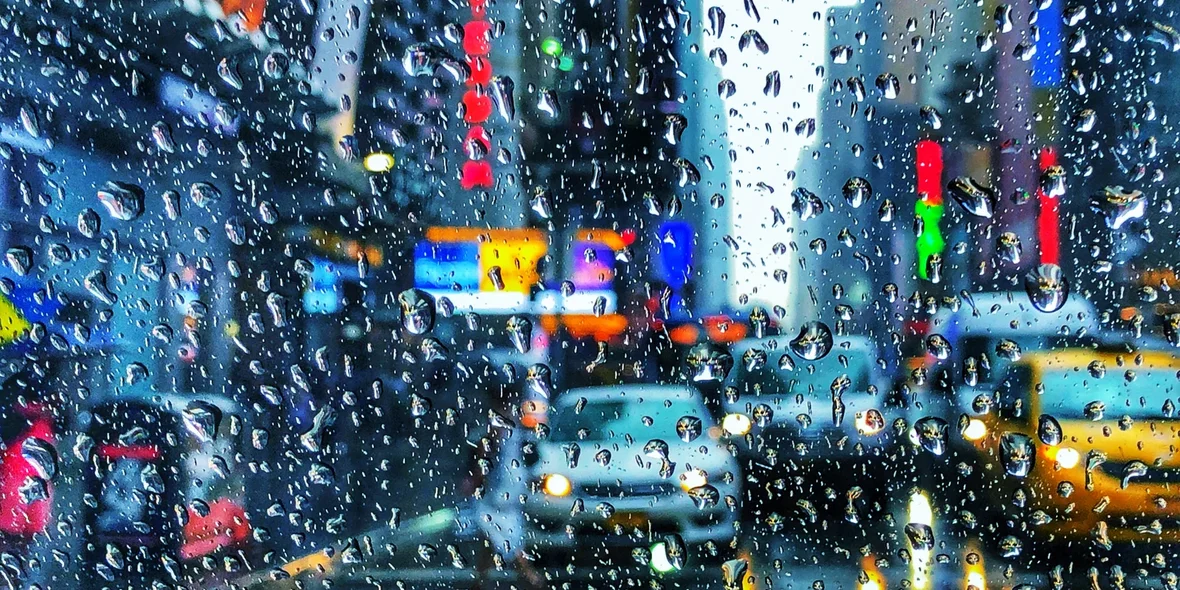
Which U.S. States Get the Most Rain? Rankings and Surprising Climate Facts
The United States of America ranks fourth in the world by land area, following Russia, Canada, and China. The country’s territory is so vast that it stretches from the Atlantic to the Pacific Ocean. Unsurprisingly, it encompasses a wide range of climate zones — from the Arctic cold of Alaska, the tropical humidity of Hawaii, and the arid deserts of Nevada, to the subtropical forests of Louisiana.
We have prepared this material to explore what “raininess” really means and whether it is defined solely by the amount of precipitation.
The Rainiest U.S. States: Rankings
Raininess describes how frequently and how intensely precipitation occurs in a given region. It is measured using two main indicators: the total amount of precipitation (in millimeters or inches per year) and the number of cloudy or rainy days. Raininess depends on several factors, including geography (e.g., proximity to oceans such as the Gulf of Mexico or the Pacific), topography (e.g., mountains that trap clouds, as in Hawaii), and climate type (tropical, subtropical, or temperate).
States with the Most Cloudy Days Per Year
Cloudy days are defined as those with more than 50% cloud cover or at least 0.25 mm of precipitation. According to the most recent data from 2024, the states with the most frequent rainy or cloudy weather are:
- Alaska. Alaska leads with 225–235 cloudy days per year (Anchorage: ~230 days). The primary reasons are its Arctic climate and Pacific cyclones. However, the total precipitation is relatively low: Anchorage receives about 460 mm annually, often in the form of snow. This contradicts the common assumption that cloudiness always implies heavy rainfall.
- Washington. Washington records 160–180 cloudy days annually (Seattle: ~170 days). Pacific winds and mountain ranges contribute to frequent overcast skies and precipitation. Seattle is often cited in popular rankings as the “rain” capital of the U.S., but it receives only about 915 mm of precipitation annually, modest compared to southern states.
- Oregon. Oregon sees approximately 150–175 cloudy days per year (Portland: ~165 days). The marine climate in the western part of the state brings persistent cloud cover, although heavy rainfall is relatively rare. The eastern part remains notably dry.
- New York. New York has 150–165 cloudy days annually (Buffalo: ~160 days). The Great Lakes are a major source of moisture, resulting in frequent precipitation. However, much of the cloudiness here is associated with snowfall rather than rain.
- Maine. Maine experiences 140–160 cloudy days per year. Despite the frequent overcast skies, heavy rainfall is uncommon, which is why the state does not rank among the top in terms of annual precipitation.
U.S. States with the Highest Average Annual Precipitation
Rain and snow are the primary forms of precipitation, but total annual precipitation also includes irregular weather phenomena such as hurricanes and cyclones. Hurricanes, which typically originate over the ocean, bring higher precipitation to coastal states. Cyclones, on the other hand, are less predictable and can deliver intense rainfall or snowstorms deep into the continental interior. Based on data from 2024, the leading states in terms of average annual precipitation are:
- Hawaii. Hawaii ranks first in the U.S. for annual precipitation. The islands receive about 1750 mm of precipitation annually, with the city of Hilo alone averaging ~3300 mm. This is due to a combination of mountainous terrain and tropical climate. Mountains trap moisture-laden clouds arriving from the ocean, and the longer the clouds linger over the islands, the more precipitation they release.
- Louisiana. Louisiana records approximately 1575 mm of annual precipitation (New Orleans: ~1650 mm). The Gulf of Mexico and hurricanes, such as Hurricane Ida in 2021, contribute significantly to the state’s high humidity and rainfall. Compared to Seattle (915 mm), rainfall here is more intense, although there are fewer rainy days.
- Alabama. Alabama averages 1524 mm of precipitation per year (Mobile: ~1727 mm in 2023). Tropical storms and the Gulf contribute to frequent downpours. Despite having fewer rainy days (around 60) than Seattle (~150), Mobile receives substantially more precipitation.
- Mississippi. Mississippi receives around 1473 mm of precipitation annually (Jackson: ~1422 mm). Thanks to summer thunderstorms and a humid subtropical climate, rainfall is relatively evenly distributed throughout the year without major fluctuations.
- Florida. Florida, situated almost entirely along the Atlantic coastline, experiences an average of 1450 mm of precipitation annually. Beyond its typical wet season cycles, the state is frequently impacted by hurricanes, which significantly increase overall rainfall levels.
Let’s Summarize
Cloudiness does not always equate to heavy rainfall, as evidenced by Seattle, which has fewer total millimeters of precipitation than many southern cities. Data confirm increasing precipitation in the southeastern U.S., driven by hurricanes and El Niño patterns. In terms of rainy days, Syracuse, New York, leads with 180 days per year. In terms of total precipitation, Hilo, Hawaii, is unmatched with 3300 mm annually. The city that combines both extremes — the highest number of rainy days (301) and the highest volume of precipitation (3300 mm)—is also Hilo, Hawaii, making it the rainiest city in the country. Hawaii, accordingly, stands as the rainiest state overall, leading both in total precipitation and high cloud cover.
Author
I write informative articles about real estate, investments, job opportunities, taxes, etc.























